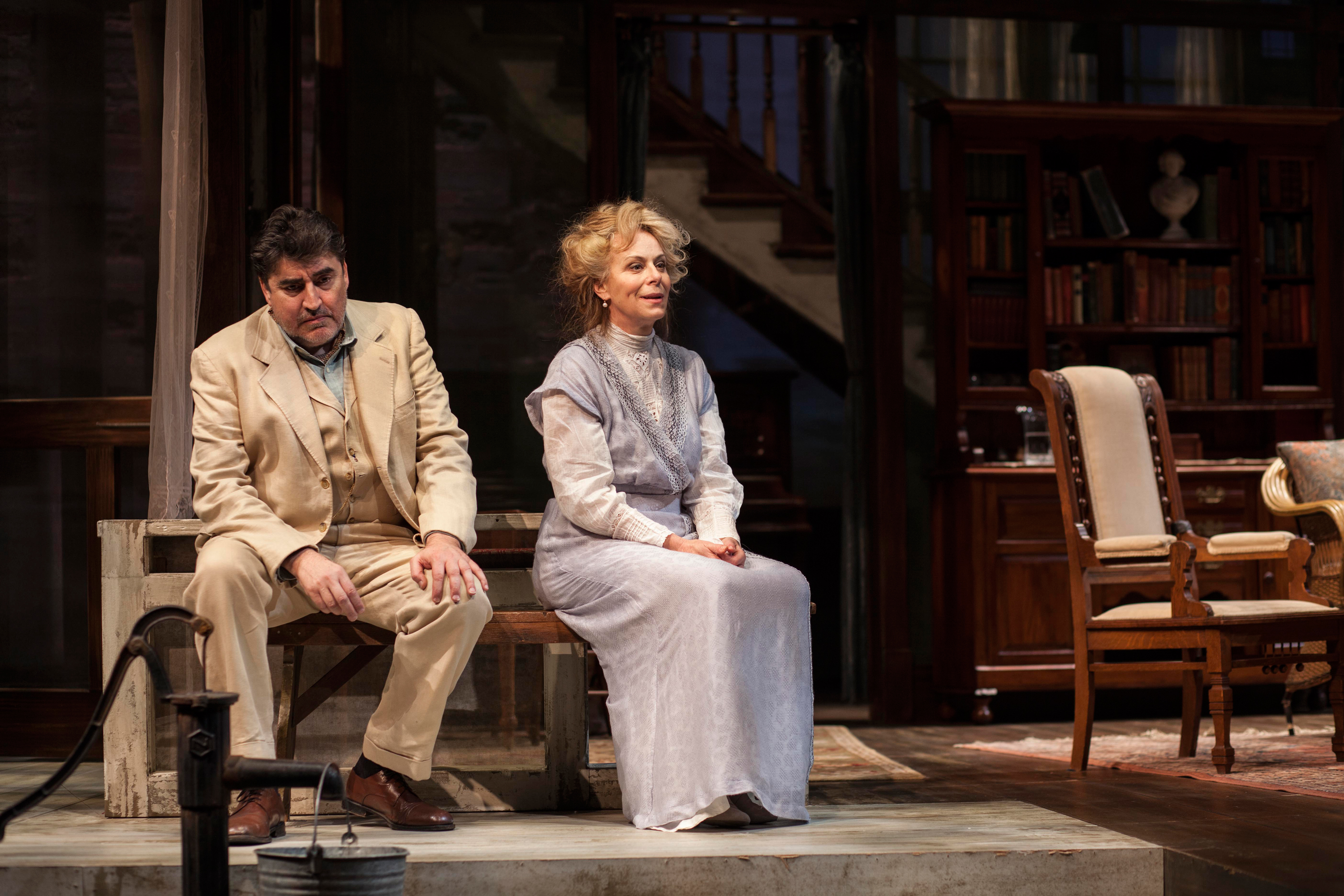‘Long Day’s Journey Into Night’ at the Geffen Playhouse
O’Neill’s Group Portrait of Family Dysfunction

Though written in 1939-40, O’Neill’s searing portrayal of his Irish Catholic family relentlessly imploding over a single day and night wasn’t seen until 1956, when it was immediately acclaimed a classic of the American theater, awarded a Tony for best play, and in 1957, the Pulitzer Prize.
The story is closely autobiographical, set in 1912 in the O’Neill/Tyrone family’s rickety summer cottage on the Connecticut shore, inhabited by the young playwright, his father, mother, brother, and an Irish domestic. It was the world of his late youth, before he lost all three family members in a three-year period, ending with the death of his father, the famous actor James O’Neill, in 1920. It wasn’t until the end of his career that he felt capable of taking on those ghosts—each haunted by past failures and broken dreams and struggling with addiction, alcoholism, and a fierce love for one another that can turn to antagonism, even hate, with a misunderstood joke, a sidelong glance, or another shot of whiskey.
As the title makes clear, the play slowly ratchets up the emotional stress: with each belt of boze come more revelations, accusations, and blame, as the family members tilt against one another, come to blows, tearily reaffirm their love, then do it again. It is as powerful a dissection of the irreconcilable contradictions of the human condition, to say nothing of family life, as we have—a piece of timeless theater. But it is also perfectly of its time, that mid-20th century American existentialism which inevitably played out in dilapidating wooden houses, fueled by fading passions, recrimination, and oceans of hard liquor.
There is arguably no greater classic in American theater. But classics, too reverently handled, can seem encased in glass, or formaldehyde. The Geffen’s production, the first major staging in Los Angeles in nearly a decade, is not. Though Mary Tyrone is described in O’Neill’s notes as a pale ghost, drifting about at the end of the play in a morphine cloud—and is typically played in an ethereal, mannered way—Kaczmarek’s Mary is radiant, lusty, and notably normal, avoiding the “Blanche Dubois effect” by using her own, Milwaukee-bred voice, a middle-class Midwestern Catholic school girl just like Mary. For Kaczmarek especially, it is a tour de force, but Molina and the others are equally exuberant and intense, playing down the morbidity and playing up the play’s wry wit and raucous poetry—its essential Irishness.
What O’Neill called “this play of old sorrow, written in tears and blood,” still grips us because its themes are still ours: addiction, denial, fear and despair at aging and loss, and stumbling through the fog of memory, addled by drink and drugs, in search of love and acceptance, mostly by our own selves.
Long Day’s Journey Into Night plays until March 18 in Westwood. Run don’t walk.



